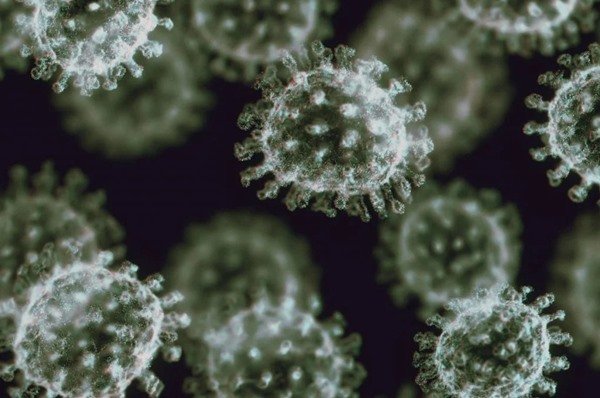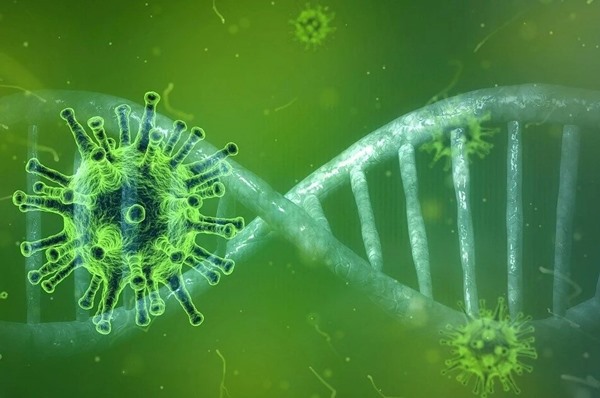At a press conference on Wednesday (16/3), the Director-General of the World Health Organization, Tedros Adhanom Ghebreyesus, warned that some countries in Asia and Europe are returning to up and down transmission curves of the coronavirus. This may just be the tip of the iceberg, as the number of tests has gone down a lot.
“Every country is facing a different situation, with different challenges, but the epidemic is not over yet,” Adhanom said.
The micron variant was first discovered in South Africa and has been classified by the World Health Organization as of concernAndrey Onofrenko / Getty Images
 *** omicron-what-you-know-about-the-variant (5)
*** omicron-what-you-know-about-the-variant (5)This is because the variant contains about 50 mutations, more than other variants identified so far.Getty Images
 *** omicron-what-you-know-about-the-variant (5)
*** omicron-what-you-know-about-the-variant (5)According to the World Health Organization, Micron is more resistant to the vaccines available in the world against other variants and is spreading faster.Peter Dazely / Getty Images
 *** omicron-what-you-know-about-the-variant (5)
*** omicron-what-you-know-about-the-variant (5)Symptoms identified by researchers in sufferers include body aches, headaches, fatigue, night sweats, a feeling of throat scratching and an increased heart rate in children.Ovi Krigsey / Getty Images
 *** omicron-what-you-know-about-the-variant (5)
*** omicron-what-you-know-about-the-variant (5)Regarding micron ferocity, the data is limited, but they suggest it may be less severe than delta, for example.Pixabay
 Omicron What is known about the variable
Omicron What is known about the variableThe appearance of the variant is also unknown to scientists. Therefore, researchers consider three theories of the evolution of the virusGetty Images
 *** omicron-what-you-know-about-the-variant (5)
*** omicron-what-you-know-about-the-variant (5)The first is that the variant began evolving in mid-2020, in a poorly tested population, and has now accumulated enough mutations to become more transmissible.Getty Images
 *** omicron-what-you-know-about-the-variant (5)
*** omicron-what-you-know-about-the-variant (5)The second is that the appearance of microns may be related to untreated HIV. The third, and least likely, is that the coronavirus would have infected an animal, evolved in it, and then re-contaminated a human.Andrey Onofrenko/Getty Images
 *** omicron-what-you-know-about-the-variant (5)
*** omicron-what-you-know-about-the-variant (5)In any case, genetic sequencing shows that Micron did not evolve from any of the more common variants, as the new strain does not have mutations similar to Alpha, Beta, Gamma or Delta.Andrey Onofrenko/Getty Images
 *** omicron-what-you-know-about-the-variant (5)
*** omicron-what-you-know-about-the-variant (5)Fearing a new wave, states have increased restrictions to contain the spread of the new variant.Getty Images
 *** omicron-what-you-know-about-the-variant (5)
*** omicron-what-you-know-about-the-variant (5)According to the WHO document, micron is traded in 110 countries. In South Africa, it spread faster than the delta variant, the circulation of which in the country is low.Getty Images
 *** omicron-what-you-know-about-the-variant (5)
*** omicron-what-you-know-about-the-variant (5)Even in countries where the number of people vaccinated is high, such as the United Kingdom, the new mutation is rapidly spreading.Walrus Images / Getty Images
 *** omicron-what-you-know-about-the-variant (5)
*** omicron-what-you-know-about-the-variant (5)In Brazil, 32 cases have been registered, according to the balance issued at the end of December by the Ministry of Health.Walrus Images / Getty Images
 *** omicron-what-you-know-about-the-variant (5)
*** omicron-what-you-know-about-the-variant (5)Due to the variant’s ability to spread, the World Health Organization advises people to vaccinate themselves in all necessary doses, use protective masks correctly and keep their hands sterile.Andrey Onofrenko/Getty Images
 *** omicron-what-you-know-about-the-variant (5)
*** omicron-what-you-know-about-the-variant (5)The entity also stresses the importance of avoiding agglomerations and recommends that well-ventilated environments be preferred.JuFagundes / Getty Images
0
Last week, the World Health Organization reported an 8% increase in new global cases. According to WHO Technical Director Maria Van Kerkhove, the growth in cases is due to the continued transmission of the micron variable, the spread of Emphasis on BA.2, Easing social measures and restrictions and spreading misinformation by the authorities.
“There is a lot of misinformation that The epidemic is overAnd the that micron light “This is the last alternative we will be dealing with,” Van Kerkhove said.
“We understand that the world needs and wants to continue, but this virus spreads very efficiently, and the more it spreads, the more it mutates. The good news is that we have tools, like the use of masks and distancing, and we know that vaccines save lives. It’s a multi-layered approach,” continued the director.
During the press conference, A WHO Director of Emergencies Michael Ryan, explains that new growth in cases is expected as the immunity of vaccinated people declines over time. And it will survive in those pockets of sensitivity, and it will move from place to place. It can lie dormant in a community until another community becomes susceptible to it,” Ryan said.

“Music fanatic. Professional problem solver. Reader. Award-winning tv ninja.”






More Stories
Couple retakes glacier photo after 15 years, surprised by changes: ‘It made me cry’
Two killed in hotel collapse in Germany – DW – 07/08/2024
Lula speaks for half an hour on phone with Biden about Venezuela’s electoral impasse | Politics